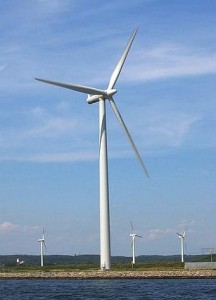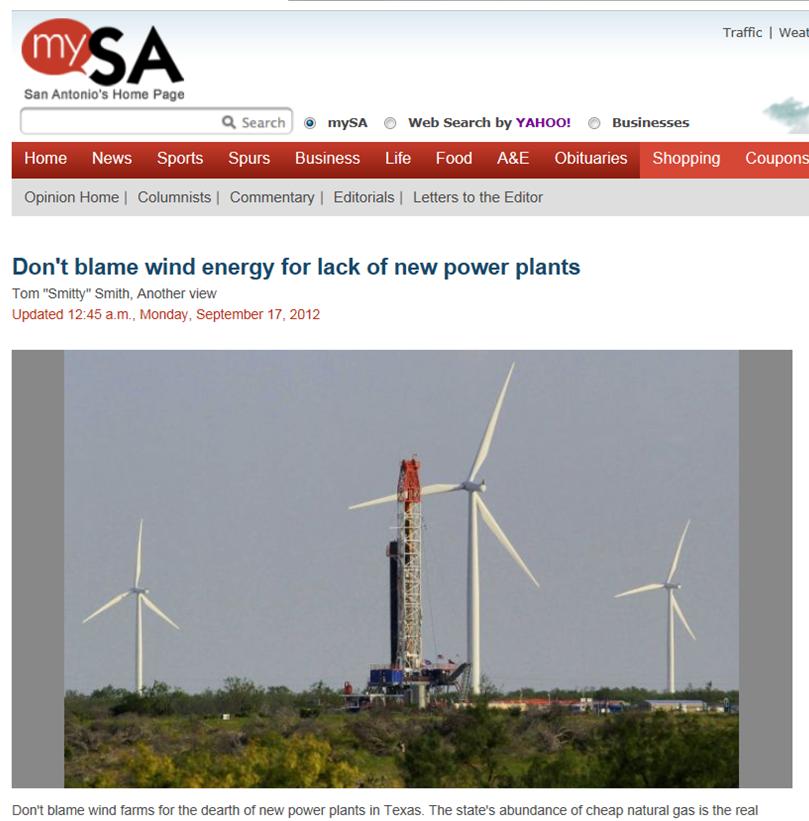Orbach: $1 billion for energy storage research could launch state’s next energy era
Watch for the University of Texas at Austin to soon make a $1 billion pitch to lawmakers aimed at unleashing the state’s vast potential to lead the nation and even the world in renewable energy production.
Ray Orbach, director of UT’s Texas Energy Institute, has compiled what he considers a compelling case for a large public investment in battery storage research meaningful enough to launch Texas into a new energy economy that taps the state’s enormous potential capacity for solar, wind and geothermal power generation.
“I really would like to have a crash program. My thought is it could be comparable to the cancer initiative,” he told Texas Energy Report. “I would like to see it in the billion-dollar range. My point is the potential is there. I just think it’s crazy not to sit down and optimize it for Texas.”
Orbach said a new study found that Texas has the potential to lead the nation in nearly every form of renewable energy. In concentrating solar alone – which allows for fluctuations that make it more economical – tapping just one percent of Texas’ total capacity could generate electricity equivalent to the entire needs of the ERCOT (Electric Reliability Council of Texas) power grid, he said.
“We have as much energy potential above ground as we do below ground,” Orbach said this week to an audience attending a symposium sponsored by the Texas Public Utility Commission called “Renewable Solutions for Energy Prosperity in Texas.”
Citing a just released July study called “U.S. Renewable Energy Technical Potentials: A GIS-Based Analysis,” Orbach laid out what’s in it for Texas if the state’s leading scientific minds solve the energy storage puzzle:
Urban utility-scale photovoltaics: Texas has the highest estimated potential (13 percent of the U.S.)
Rural utility-scale photovoltaic: Texas has the highest estimated potential (14 percent of the U.S.
Rooftop photovoltaic’s: Texas has the second-highest estimated potential (9 percent of the U.S.)
Concentrating solar power: Texas has the highest estimated potential (20 percent of U.S.)
Onshore wind power: Texas has the highest estimated potential (17 percent of U.S.)
Offshore wind power: Hawaii has the highest estimated potential, while Texas has 6 percent of U.S.
Enhanced geothermal systems: Texas has the highest estimated potential (10 percent of U.S.)
“The opportunities are so enormous. I was stunned,” Orbach said of his reaction when he read the study that takes into account environmental and land-use constraints, and topographical limitations.
Because each of the renewable capacity calculations is based on the same total land, Orbach said Texas leaders need to determine how to best optimize the state’s renewable resources with decisions about which fuel mix to pursue and where. In an interview, he acknowledged that political and economic considerations would pose major challenges, but he suggested a planning commission appointed by the governor and legislators could help navigate those.
Think of the planning concept as akin to the Texas Railroad Commission’s early history in setting production limits to ensure that oil and gas resources would last longer with conservation measures such as adequate well spacing, he said. And think of state’s commitment to building CREZ (Competitive Renewable Energy Zones) transmission lines to transport wind energy as a parallel to the research commitment needed to solve the problem of energy battery storage for wind and solar.
With its federal production tax credits, Orbach said wind has posed pricing issues for ERCOT’s wholesale competitive market. But he insisted he’s a free-market advocate who does not think wind or solar would need any subsidies to compete. As for kick-starting research to solve energy storage issues, he said Texans should think of that as an investment that would repay itself many times over.
“Our future will depend on our ability to store base load electricity from fluctuating sources. We are truly blessed with intellectual and energy sources. It’s time for a zoning, an optimization of how we use these wonderful resources for the benefit of citizens in this state,” Orbach said. “This is not just a Texas issue. The market for what we produce in Texas is global. You can think outside the boundaries of our state for these opportunities.”
In addition to the big picture, some of Texas’ energy opportunities have hardly been discussed, he said. The potential for enhanced geothermal energy alone, he said, is 384 gigawatts. That’s equivalent to five times the total ERCOT load.
Geothermal energy taps into underground heat, and fracturing underground rock is one way to release the heat. He points to natural gas wells hydraulically fractured in the Barnett Shale of North Texas and their future to be repurposed in 10 to 20 years for renewable energy production. The wells have already fractured rock at a depth of 8,000 to 10,000 feet where temperatures range from 200-300 degrees Fahrenheit, he noted.
“What happens when those wells are played out? Do we just cap them and walk away? They are a source of potential enhanced geothermal energy. We have the sources now that we’re using for liquids and gas and oil that in fact may well be available in the future for enhanced geothermal,” Orbach said.
Meanwhile, the price of solar panels is dropping sharply as China floods the market with panels at 80 cents a watt, he said. Consequently, solar installations in the first half of this year doubled to 1,254 megawatts over the 623 installed in the first six months of 2011. That’s the size of a nuclear reactor, he said, and this year it will amount to two.
“It’s a revolution,” he added. “It’s a sign for those of us interested in solar and wind and renewable energy that there’s an opportunity here for Texas to be mined.”
By Polly Ross Hughes
Copyright September 14, 2012, Harvey Kronberg, www.texasenergyreport.com, All rights are reserved. Reposted by TexasVox.org with permission of the Texas Energy Report.
Read Full Post »
 On September 9th, Adrian Shelley and I went to Bryan, Texas, to watch the unveiling of the Freight Shuttle System (FSS), a technology currently being built and tested by Freight Shuttle International. Dr. Stephen Roop, chief scientist at Freight Shuttle International and a professor at the Texas A&M Transportation Institute, opened the unveiling with a press briefing sharing his vision. The FSS is an electric, autonomous shuttle powered by a linear induction motor, providing low friction to the steel wheels running on steel lines, similar to train tracks. The FSS combines elements of truck and train transport – single shuttles run on a track similar to a train track, and according to Dr. Roop’s vision, those tracks would be elevated from other modes of transportation to reduce congestion, provide a strong level of predictability and non-stop service, and reduce infrastructure damage often associated with truck transportation.
On September 9th, Adrian Shelley and I went to Bryan, Texas, to watch the unveiling of the Freight Shuttle System (FSS), a technology currently being built and tested by Freight Shuttle International. Dr. Stephen Roop, chief scientist at Freight Shuttle International and a professor at the Texas A&M Transportation Institute, opened the unveiling with a press briefing sharing his vision. The FSS is an electric, autonomous shuttle powered by a linear induction motor, providing low friction to the steel wheels running on steel lines, similar to train tracks. The FSS combines elements of truck and train transport – single shuttles run on a track similar to a train track, and according to Dr. Roop’s vision, those tracks would be elevated from other modes of transportation to reduce congestion, provide a strong level of predictability and non-stop service, and reduce infrastructure damage often associated with truck transportation. 








